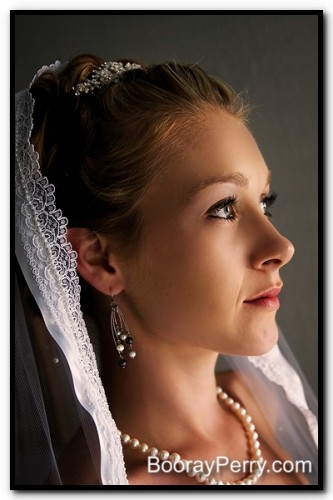Wedding Photography and Using Your Surroundings
One of the things that quickly distinguishes a professional photographer from an amateur is the ability to select a good location for a portrait (also, professional photographers have an air of mystery and suave intrigue about them, like James Bond). I see this every weekend when I’m shooting weddings (I’m a wedding photographer in Tampa, FL). People have a preconceived idea about how a photograph should look. They’ve seen wedding photographs before and they’ve seen tons of pictures taken at the portrait studio in the mall (or at school) and so, subconsciously, they believe that’s what a good picture looks like. (Not that they aren’t good. Don’t write me a nasty email, Mr. School Photographer. I shoot them too…) A good example of this at a wedding is that most people expect me to take a group and family portraits on the altar–and many times I don’t.
If you look at any good portrait photographer who works primarily on location you’ll see a common thread. They have a knack for looking at the surroundings and figuring out the best way to place their subjects. Being able to manipulate your surroundings to your advantage will help you in every type of photography that you do. In wedding photography, it can be the difference between a good picture and a great one.
With that in mind, I thought I might post some pictures from a recent wedding and talk about how I manipulated my surroundings to create, what I think, are better pictures. I’m just going to concentrate on posed shots this time around and maybe later I’ll do a post on candids.
This first picture was taken just before the bride left the dressing room to go and start the ceremony. We were already running 10 minutes late and the wedding planner was dragging her out the door when I stopped her.
“Can I just have 30 seconds?” I quickly closed the door and opened the blinds. Then I said, “somebody turn out the lights.” This shot is nothing but window light and a gray wall.
